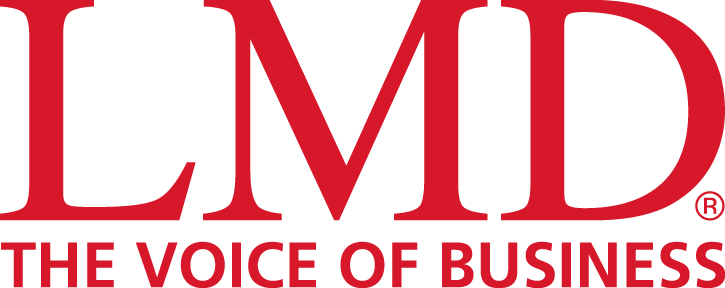PRINTING INDUSTRY
Compiled by Tamara Rebeira
THE ECO PACKAGING PIVOT
Deshantha Silva explores printing and packaging’s sustainability evolution
Q: How do you see the printing and packaging industry evolving in the next five years?
A: The industry is set for steady growth, fuelled by sustainability, technological advances and the rise of e-commerce.
Globally valued at US$ 1.14 trillion in 2024, the industry is projected to reach 1.4 trillion dollars by 2029 with a compound annual growth rate (CAGR) of around four percent.
Package printing covering corrugated and flexible packaging, folding cartons, labels and tags is expected to reach approximately US$ 700 billion by 2029, growing at seven to eight percent CAGR, technologically covering flexography, gravure, and offset, screen and digital printing.
In Sri Lanka, the industry contributes substantially to GDP with printing and packaging projected to grow at 6.5 percent CAGR between 2025 and 2031.
Digital printing will be a key driver. Food and beverage remains the main source of demand while apparel is showing signs of a recovery. The expanding pharmaceutical industry is also boosting demand for specialised locally produced packaging.
Despite the positive outlook, challenges such as intense competition, fluctuating material costs and tightening environmental regulations persist. Labour shortages, rising costs and exchange rate volatility continue to pose risks, requiring companies to innovate and maintain strong service standards to stay competitive.
Q: How is the industry adapting to changing consumer demands – especially with the rise of e-commerce?
A: The rise of e-commerce is reshaping the industry, driving demand for flexible, durable and protective solutions. Sustainability remains a key focus with the increasing use of biodegradable, recyclable and reusable materials, which is driven by regulations and consumer demand for greener products.
Smart packaging is also gaining ground, offering features such as product traceability, detailed information and anti-counterfeiting tech, which is especially valuable for pharmaceuticals. Meanwhile, automation through robotics, AI and data analytics is streamlining operations and providing actionable insights.
Personalisation is another major trend with brands leveraging custom designs, limited editions, and interactive tech including AR to boost consumer engagement and create memorable experiences.
Q: Sustainability – including going paperless – is a main focus area across industries How is the industry responding to the push for eco-friendly solutions?
A: Sustainability is essential with businesses integrating recycled materials, biodegradable options and sustainable production methods.
There is a strong shift away from plastic packaging with paper alternatives – such as single layer paper with barrier coating and uncoated paper – gaining popularity for their eco-friendly qualities.
Technologies such as LED UV printing are replacing traditional methods, offering energy efficient and environmentally friendly solutions. This transition helps reduce harmful emissions and energy consumption. Additionally, going paperless is contributing to waste reduction, water conservation and cost savings, as paper production consumes natural resources.
While smaller companies may face initial costs, adopting sustainable practices is inevitable and will be ingrained in the industry culture, ultimately benefiting the planet. Sustainable packaging materials include recycled paper, cardboard, biodegradable plastics, compostables, glass and aluminium, for their high recyclability and durability.
Q: And what are the challenges faced by the printing and packaging industry today?
A: The industry faces challenges both globally and locally.
Globally, rising costs, environmental pressures, changing consumer expectations and intense competition call for continuous innovation. Locally, our reliance on imported raw materials, particularly paper, makes the industry vulnerable to price fluctuations, logistics issues and currency volatility.
The need to invest in new technology and sustainable practices is also pressing.
A key challenge is the shortage of skilled labour due to the migration of trained professionals and slow local skills development. The Ingrin Institute of Printing & Graphics, Sri Lanka Association of Printers (SLAP) and Sri Lanka Institute of Packaging (SLIP) are working to upskill the workforce, though the output remains insufficient.
The rise of digital media has further disrupted the printing industry, especially newspapers, leading to the need to adapt to online consumption.
Despite these hurdles, including the economic crisis that led to import restrictions and a dollar shortage, the local printing and packaging industry has demonstrated resilience and emerged better equipped to face future challenges.
Q: How are evolving global regulations impacting the packaging segment?
A: Global sustainability regulations are pushing exporters and suppliers to meet high-quality and strict environmental standards set by foreign clients.
A significant development is the EU’s Packaging and Packaging Waste Regulation (PPWR), which was passed in February last year and is set for implementation in August 2026.
The regulation aims to reduce packaging waste, minimise raw material use and promote the circular economy. Sri Lankan exporters to the EU will need to prepare for these changes.
Another key trend is the rise of Extended Producer Responsibility (EPR), which mandates producers to manage product lifecycles including waste.
Countries such as France, Germany and South Korea have implemented EPR laws with Sri Lanka drafting similar regulations through the Ministry of Environment and Central Environmental Authority (CEA) with inputs from SLIP and the Ministry of Industries.
These regulations are driving a necessary shift to sustainable packaging, making compliance vital for global competitiveness and innovation.







